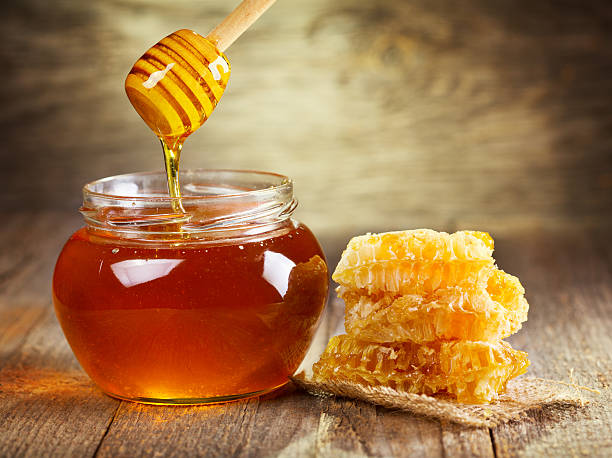Honey is a food that provides energy at the moment. Combined with lemon juice, it helps to relieve the symptoms of constipation and a sore throat. On the other hand, it acts as a preservative, disinfectant, and is a great ally for the health of the skin.

Honey comes from the nectar of some flowers, in which bees participate in its production. The main reason for this event is that the bees feed on its nutrients, and the hive in general survives on it. These insects produce it using their salivary enzymes.
An anecdote is worth noting, and that is that bees usually produce more honey than necessary. This fact made humans take advantage of the surpluses for their own consumption. Thus was born beekeeping.
Below, you will be able to obtain information about honey, its properties and benefits, both nutritional and medicinal, and we will go over some additional details.
Properties and nutritional benefits of honey
Honey stands out for its high calorie content, so it is not suitable in weight loss diets. However, it has very interesting properties that make it a food to consume in some cases. This is its nutritional information:
- It has a very high concentration of calories, for when energy is required instantly. These are linked to carbohydrates, specifically simple sugars. Diabetic or hyperglycemic people should moderate their consumption
- About a fifth is water, ideal for maintaining hydration of the body or skin.
- It does not stand out precisely for containing minerals and vitamins, but other molecules such as flavonoids, which exert an antioxidant function in the body.
- It keeps really well.
Having seen its nutritional properties (basically sugar), we turn to contemplate the medicinal benefits it offers to our body.
- It has traditionally been used as a powerful wound healer, and ancient tribes gave it the name “Nectar of the Gods”, perhaps because of its flavor.
- It meets the energy needs at a certain time.
- Ideal for colds and colds. What mother has never prepared us lemon juice with honey?
- Relieves a sore throat and reduces coughing.
Apart from improving the state of health, it also benefits our skin, which is why it is used in cosmetic treatments, since:
- Moisturizes the skin.
- It acts against the different signs of aging.
- Recommended together with argan oil, rosehip and sweet almond oil to combat acne pimples and psoriasis. From Argan Oil Web we recommend that you consult a specialist before using honey for this purpose.
Does honey have contraindications?
The truth is that yes; As we have mentioned before, it has many calories, so an excessive consumption makes you fat quickly. If you usually drink a lot of honey, do a lot of exercise or relax, since honey makes you fat.
It is also not indicated for diabetics or hyperglycemics. Also, children under two years should not give honey, since their body is not prepared to assimilate it.
Apart from this, consuming this food from time to time and in controlled doses is not a problem.
The different types of honey
Depending on the flower that a bee pollinates, the honey will be of one type or another. On the other hand, if the insect has been in contact with more than one species, the honey is called “multifloral”. Apart from this detail, below you can know the most common types of honey.
- Rosemary It is mainly antibiotic and antiseptic. It occurs when bees pollinate rosemary.
- From eucalyptus. The color of this honey is darker. It is the most used for colds and sore throats.
- It has a particularly intense flavor. It is produced from fields where there is thyme.
- Orange blossom honey. Thicker than the rest of the types. Although it is not scientifically confirmed, some claim that it possesses sedative properties.
- Lavender honey. When bees pollinate the lavender, a thicker type of food is obtained. It stands out because it is rich in minerals such as iron. Like rosemary, it is anti-inflammatory.
- Finally, we have the lesser known linden honey. Its color is clear.
Assessing the quality of honey: crystallization
Honey tends to crystallize when its temperature is below a certain threshold (25 ºC). This is due to the very high concentration of sugars (approximately 80%). The crystallization shows that this food maintains the essential nutritional proportions, which is why it is considered as a quality index.
If the honey is crystallized, its quality will be higher. On the contrary, if it is too liquid, below 25 ºC, it means that its medicinal and nutritional properties are not efficiently preserved.
Last notes
Finally, reiterate the moderation of honey consumption if you have diabetes or hyperglycemia. In these cases, eating a lot of honey is bad or can be harmful to health. Regarding the flavor, it is true that it is not the same if you buy it in a supermarket, than if you do it in a farm where it is made by hand. In this case, you would be buying pure honey.

